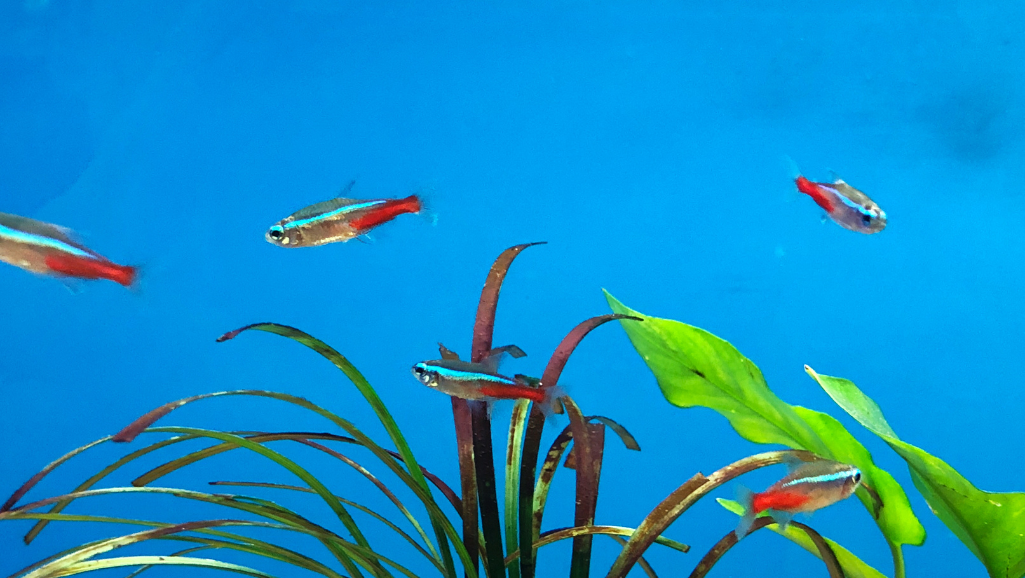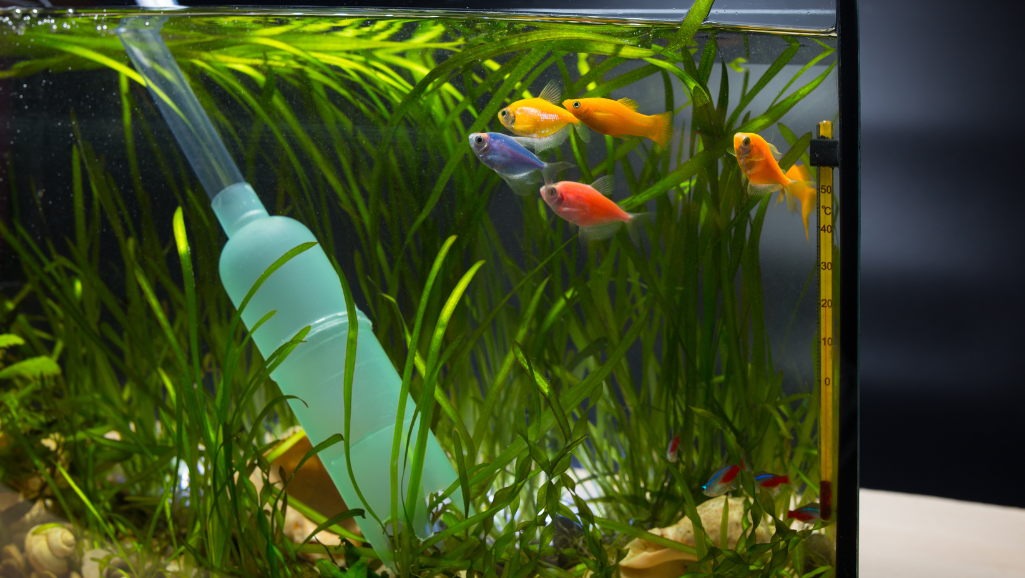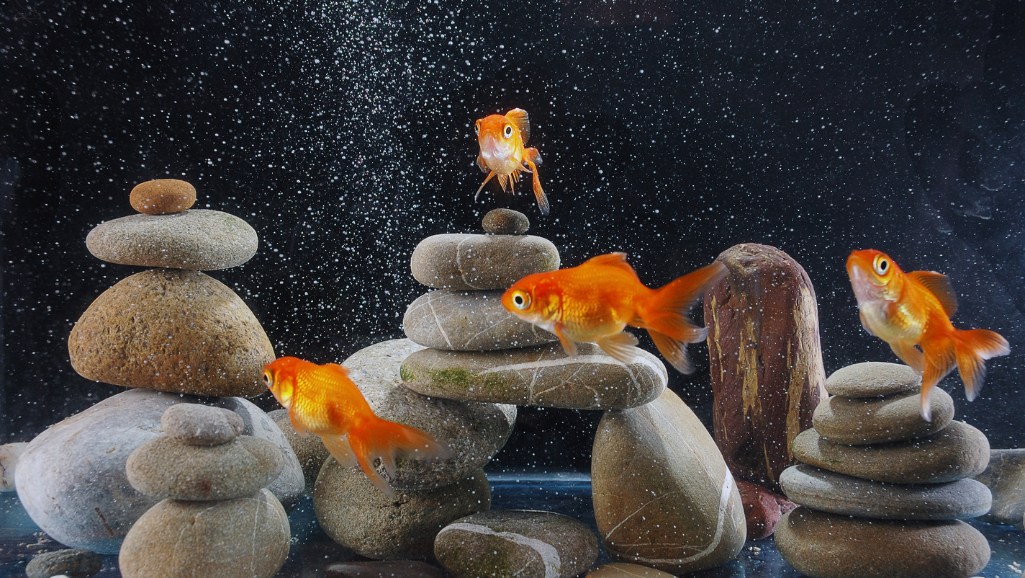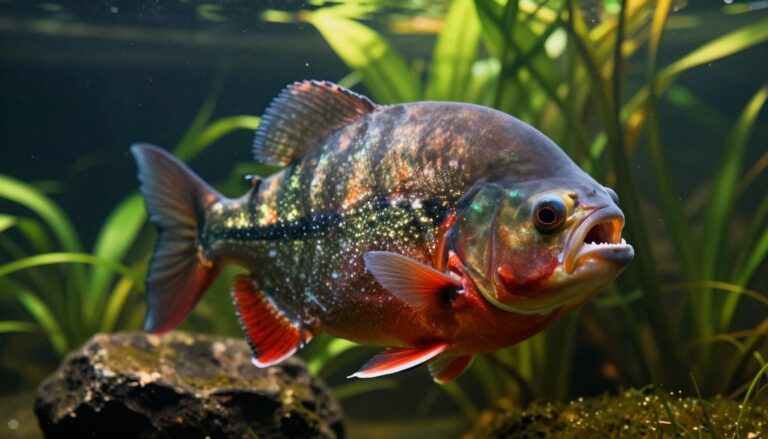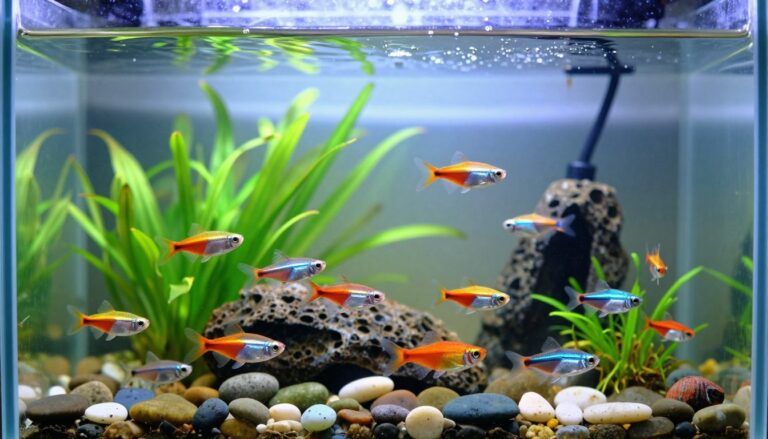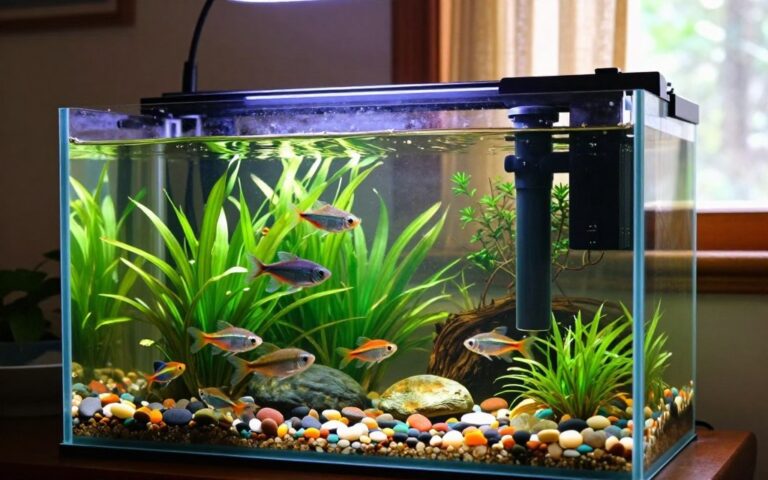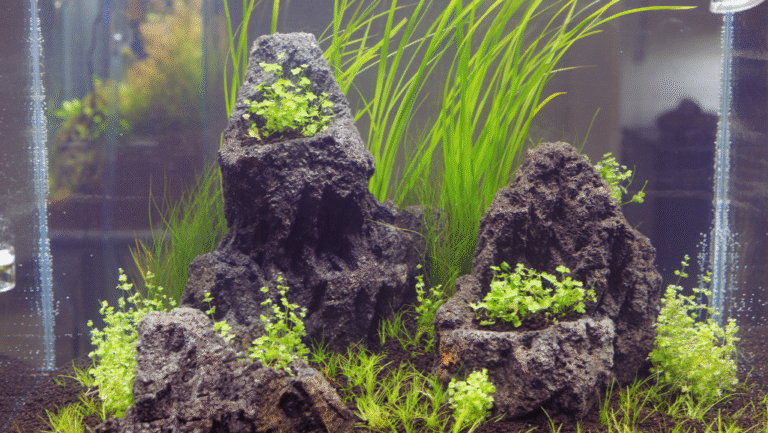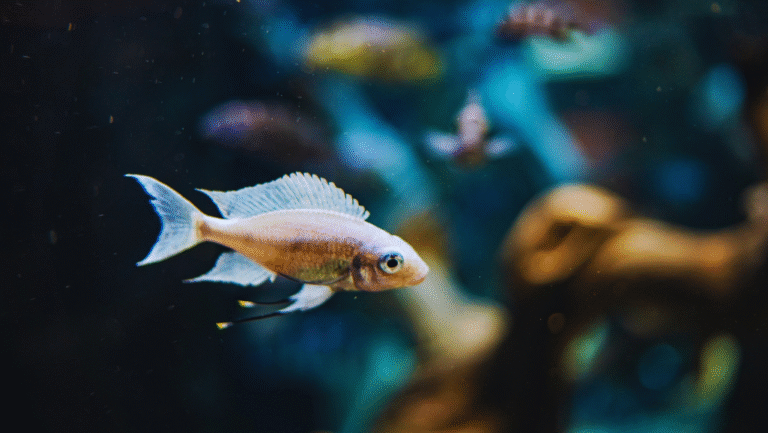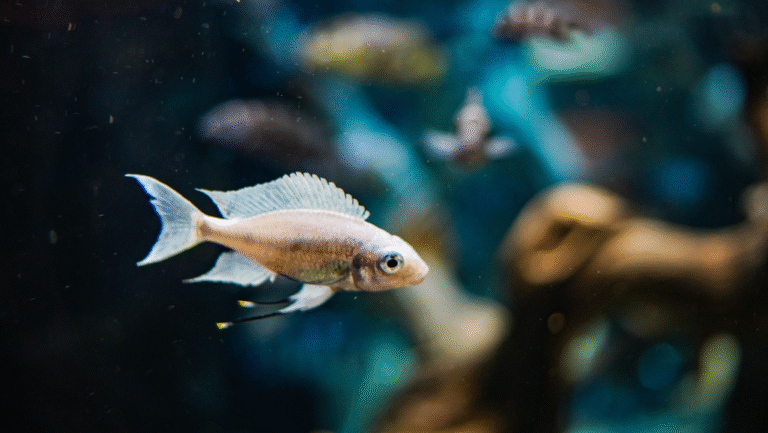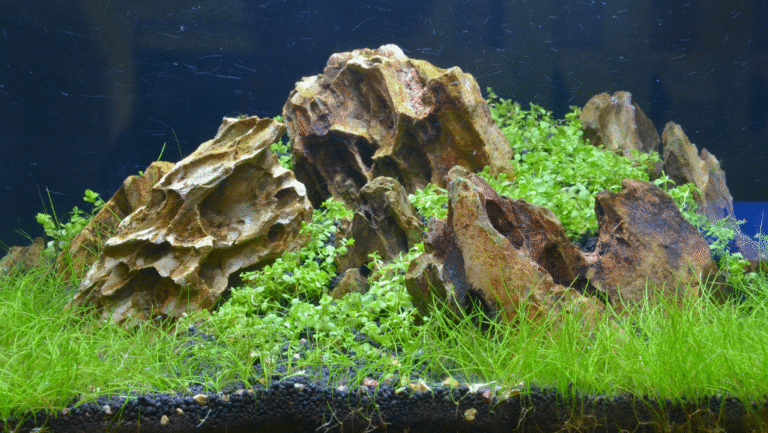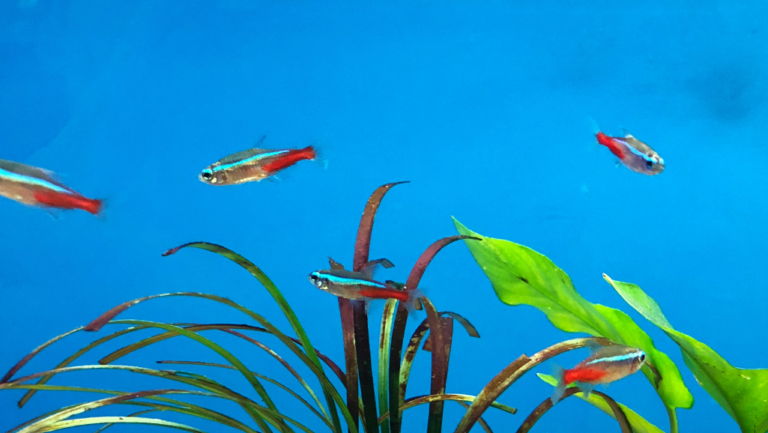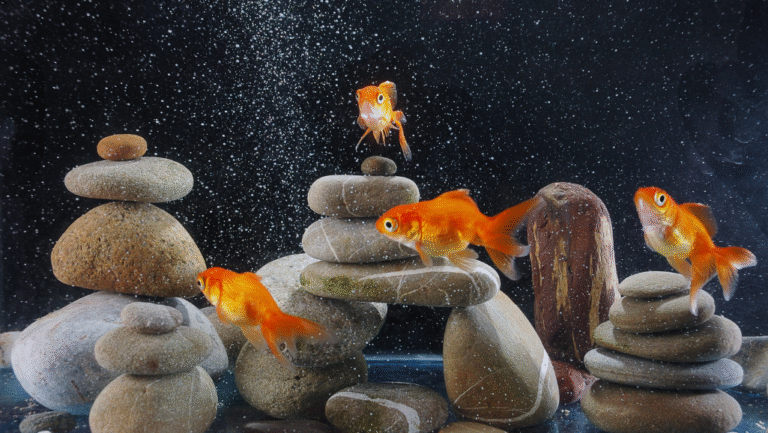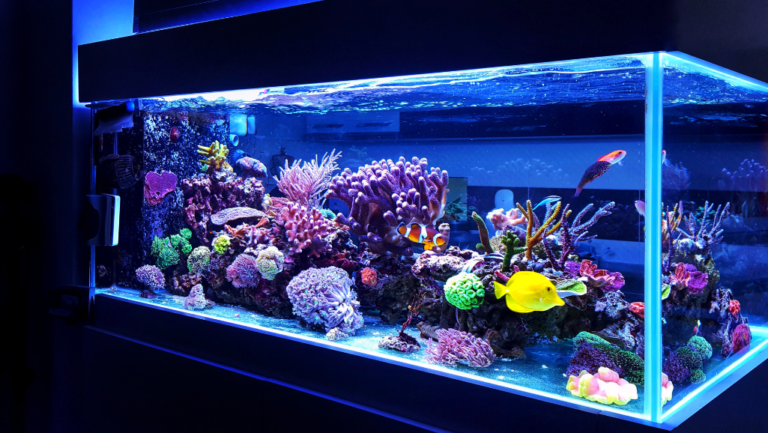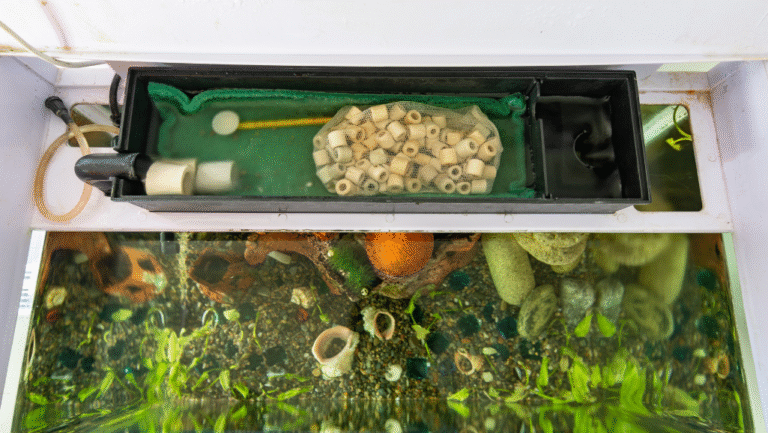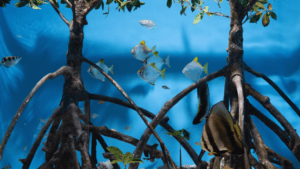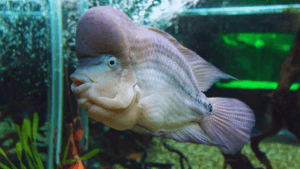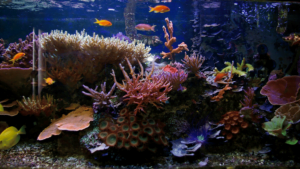Ready to bring color and life into your home? This short guide helps new hobbyists pick hardy, low-stress options that build confidence fast.
Beginner fish choices like rasboras, tetras, corydoras, and bettas are widely available at most pet stores and are forgiving of small water swings.
Some species thrive in schools of six or more and prefer neutral pH. Others need special care: goldfish grow to 12–14 inches and need a large tank and frequent water changes.
Expect clear guidance on group sizes, feeding, and compatibility so your small community stays peaceful and vibrant.
We also cover useful picks like bristlenose plecos, kuhli loaches, and Bolivian rams — options praised by experienced keepers for color and easy care.
Key Takeaways
- Best Starter Aquarium Fish.
- Choose hardy species that handle water swings and are common at the local store.
- Match each fish to the right tank size to avoid surprises as they grow.
- Keep schooling species in groups for comfort and natural behavior.
- Bettas do best alone in a heated 5-gallon setup with gentle filtration.
- Goldfish need much larger tanks and more frequent maintenance than small species.
- Bristlenose plecos help with algae and enjoy driftwood and veggies.
Start with confidence: how to choose beginner fish you’ll love long-term
Pick hardy species that tolerate small fluctuations so you can build skills without stress. Look beyond color and juvenile size. Think about adult size, temperament, and the water they prefer.
Hardy species and easy care: what “beginner-friendly” really means
Hardy aquarium fish tolerate minor swings in temperature and chemistry. That makes them an easy keep while you learn testing, feeding, and maintenance.
Adult size and tank size: planning beyond the cute juvenile stage
Make sure you evaluate adult size, not just how small they look in the store. Common goldfish grow to 12–14 inches and need roughly 30 gallons per adult. Planning tank size now prevents rehoming later.
Temperament, schooling, and community compatibility
Many top choices are schooling fish that feel secure in a group of six or more. Tetras often prefer neutral pH (about 7.0–7.8), while rasboras and corydoras handle a wider range.
“Choose peaceful species with matching water needs, and your community will be calm and rewarding to watch.”
- Balance midwater swimmers with bottom dwellers for layered activity.
- Pick species that accept varied foods and avoid fin-nippers.
- Start small and add mates once your routine and water are stable.
Best starter aquarium fish
Choose colorful, hardy species that show natural behavior in small community groups. These options offer vivid color, clear size cues, and easy social needs for a calm setup.
Harlequin and lambchop rasboras
Harlequin rasbora and lambchop rasbora reach about 2 inches long. They are peaceful, pop with color, and shine as a schooling fish when kept in six or more.
Neon and cardinal tetras
Neon and cardinal tetras glow under soft light. They prefer neutral water and show their best behavior in groups of six or more.
Corydoras and panda varieties
Corydoras catfish, including panda, are playful bottom dwellers. They hit roughly 1–3 inches and do well with sinking foods in groups of three to six.
Barbs, bettas, and larger species
Cherry barbs, tiger and Odessa barbs are lively; keep larger groups to curb nipping. A single betta can be a stunning centerpiece with gentle flow and fin-safe mates. Common goldfish grow 12–14 inches and need true big-tank planning and frequent water changes.
- Balance midwater swimmers with bottom dwellers.
- Match adult size and group needs before buying.
- Provide hiding spots for shy varieties like kuhli loaches and bristlenose plecos.
Set up your first community tank the right way
Plan your community tank so schooling species have long swim lanes and shy residents have hidden retreats. A clear layout reduces stress and helps each species show natural behavior.
Tank size and layout: room to school, space to hide, and live plants
Choose a tank with length so rasboras and tetras can swim in groups. Leave planted pockets, caves, and driftwood for bottom dwellers and plecos.
Use soft substrate where corydoras and kuhli loaches forage. Live plants help buffer water and break sight lines, creating calm zones.
Filtration and flow: gentle currents for long fins, solid turnover for clean water
Pick a filter that keeps water clear without strong jets. Baffle returns or lower pump output for long-finned bettas and similar species.
Guard intakes and add sponge covers to protect delicate barbels and prevent small inhabitants from being sucked in.
Heat and water parameters: stable temps and suitable pH/hardness ranges
Heat consistently and verify with an accurate thermometer. Many community species prefer neutral pH (about 7.0–7.8).
Test regularly and aim for midline values that suit your chosen species. Stable conditions prevent most early health problems.
- Match tank size to adult size and activity.
- Use plants to enrich behavior and water quality.
- Arrange open lanes for schooling and hides for shy dwellers.
Care routines made simple: feeding, water changes, and observation
A steady, simple routine makes daily care feel manageable and rewarding. Start with a clear rhythm: small twice-daily feedings, a weekly water change, and a short daily check for behavior and appetite.
Balanced diets boost color and health. Offer quality pellets and frozen food on rotation, plus fresh veggies for grazers. Bettas should eat betta-specific pellets sized to their mouths and only what they finish in about three minutes, twice daily.
Bottom-feeder care and targeted feeding
Bottom dwellers need sinking wafers and timed feeding at lights-out so loaches and catfish can feed without competition. Bristlenose plecos enjoy algae wafers and pieces of zucchini, cucumber, pumpkin, or yams, and they also benefit from driftwood for grazing.
- Keep care joyful: pick a feeding rhythm and a weekly water-change day that fits your life.
- Rotate food: pellets, frozen fare, and veggies cover nutritional needs.
- Observe daily: appetite, posture, and gill movement reveal early issues.
- Keep a small group: a tight community makes it easy to spot who is thriving.
Record simple notes in a log. Matching pre-conditioned water temperature on change day protects delicate fins and promotes steady growth. With a few clear steps, routine care becomes easy care you can enjoy every day.
Smart stocking: peaceful community fish that thrive together
Plan your stocking around peaceful companions that share size, diet, and swim zones to reduce stress. This approach helps each species settle quickly and show natural behavior.
Stock schooling species in proper groups so they feel secure and spread out across the scape. Barbs like tiger and Odessa do best in groups of six or more to channel energy into schooling rather than nipping.
Mix midwater rasboras or tetras with bottom cleaners such as corydoras for balanced activity and easier cleanup. Add a single, peaceful centerpiece like a Bolivian ram to anchor the layout without bullying tankmates.
Match bio-load to filtration and tank size and add new specimens in stages so beneficial bacteria keep pace. Lean into varieties that contrast in color and shape but share similar water needs.
- Build around peaceful community fish with complementary swim zones.
- Keep schooling fish in correct groups so they display confidently.
- Choose barbs in larger groups to reduce nipping.
- Stick to proven pairings for beginner fish success.
Betta-specific success tips for beginners
Keep your betta comfortable and visible. A single betta does best in a five-gallon tank with stable heat and calm flow. Aim for 78–82°F and use an accurate thermometer to avoid swings.
Choose a quiet filter and baffle the return so water moves gently. Strong currents stress long fins and hide natural displays.
Five-gallon minimum, 78–82°F, and soft-flow filtration
Commit to a minimum five-gallon size and steady heat. This gives room for swimming and helps water chemistry stay steady.
One male per tank; choose non-nipping, similar-sized tank mates
House one male per tank to avoid fights. If you add companions, pick similar-sized, non-nipping species that accept low flow.
Protect those fins: smooth decor and mindful aquascaping
Run the finger test on decorations. No snags, no sharp edges. Add leafy rests and gentle plants so your betta can lounge and display.
- Feed betta-specific pellets sized for their mouth and keep portions modest.
- Adult size: expect about 3–4 inches long when fully grown.
- Place the tank where you can observe daily; early detection makes care simple and rewarding.
Goldfish done right: space, filtration, and a simple menu
A healthy goldfish setup starts with room, flow, and a diet that sustains size. Common goldfish reach about 12–14 inches, so plan tanks and tank size for their adult footprint.
Give them lots of volume: aim for roughly 30 gallons per single fish, or two in a 55-gallon tank. These species tolerate a broad pH and hardness range, but they demand frequent water changes and strong mechanical filtration to keep water pristine.
Keep goldfish in a dedicated, single-species tank. They will eat plants and any small tankmates that fit in their mouths. Many owners move adults to outdoor ponds for space and long-term health.
Feed simply and reliably: offer spirulina-rich pellets, vegetables, and gel foods like Repashy Super Gold for steady energy. Source healthy stock from a trusted store and quarantine new arrivals before adding them to your main tank.
Watch fins and gill movement during maintenance days. Large fish show stress early. With the right tank, filtration, and a balanced menu, these classic species become interactive, long-lived companions.
- Plan big: adult size matters for long-term success.
- Expect heavy waste—match filtration and water changes.
- Prioritize quarantine and a varied, vegetable-forward food plan.
Your first trip to the fish store: a practical checklist
Plan your visit with a clear list so you walk into the fish store confident and prepared.
Bring a written list: note your aquarium and tank dimensions, heater, a reliable thermometer (avoid stick-on strips), and a filter with adjustable flow.
Pick essential supplies: test kits, water conditioner, and quality food — include sinking wafers for bottom feeders and betta-specific pellets if needed.
- Choose hardy plants and a soft substrate to protect barbels on corydoras and kuhli loaches.
- Ask staff to match species to your planned tank size and water parameters, and request to see fish eating before you buy.
- Inspect clear eyes, intact fins, steady swimming, and alert behavior; skip any clamped or lethargic specimens.
For guppies and other livebearers, confirm sex ratios or buy single-sex groups to avoid surprise fry. Verify compatibility with your short list so the community stays calm.
Final tip for keepers and beginners: schedule quarantine for all new arrivals. Quarantine protects your display and lets new stock settle with less stress.
Avoid these common mistakes that trip up beginners
Crowding a small tank is the fastest way to turn a calm community into chaos. Overstocking overwhelms filters and sends water quality downhill quickly.
Don’t skip weekly changes. Regular water changes are the backbone of an easy keep routine. Gold species that produce heavy waste need more frequent attention to prevent ammonia spikes.
Overstocking small tanks and skipping water changes
Too many animals in a small tank overloads biological filtration. That leads to cloudy water, stress, and disease.
Keep a steady change schedule and add new stock slowly so your biofilter keeps pace.
Mixing incompatible species or neglecting schooling group sizes
Respect schooling needs: tetras and rasboras do best in groups of six or more. Shy species may hide or lose color when kept alone or in too-small groups.
Research compatibility before adding mates. Long-finned tenants like bettas and angelfish suffer when housed with nippers. Avoid pairing aggressive barbs with delicate fins.
“Add species gradually, test water often, and keep a simple maintenance checklist to protect your community.”
- Resist impulse buys — aggressive or sensitive species can disrupt a calm community.
- Watch for signs: hiding, faded color, or clamped fins — these warn of stress.
- Keep a short care checklist and stick to it; consistent steps make success repeatable.
Conclusion
A thriving display starts with a short, intentional stock list and steady care habits. Choose peaceable community fish that match size, diet, and water needs so each species shows its natural color and behavior.
Lean on hardy varieties like harlequin rasbora, panda cory, and cherry barbs. Keep schooling species in a group of six or more and give bottom dwellers at least three companions so shy small fish feel secure.
For bettas, remember one male per tank with smooth decor and gentle flow to protect fins. Add plants, hides, driftwood for plecos, and a simple food and water schedule to keep momentum going.
With clear choices, patience, and steady routines, your community tank will reward you with a calm, colorful living display that grows more beautiful each week.
